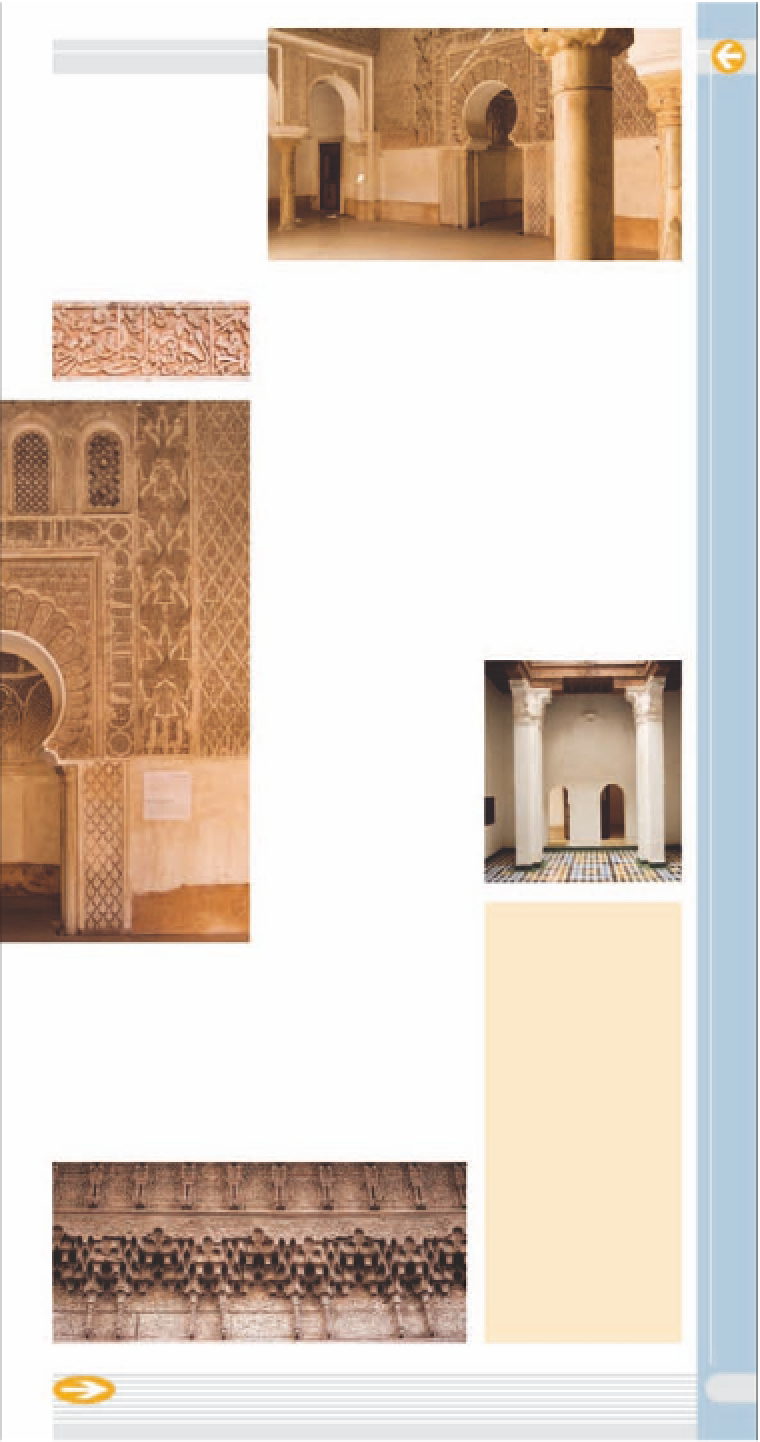Travel Reference
In-Depth Information
$
Carved stucco
Vertical panels of
intricately carved plaster
stretching above the
tiling are decorated with
inscriptions or geometric
patterns
(below)
; depic-
tion of humans or anim-
als is prohibited by Islam.
%
Prayer Hall
The elaborately decorated prayer hall has an
octagonal wooden-domed roof supported by marble
columns. The stucco features rare palm motifs and
calligraphy of Koranic texts. The room is well-lit by
openwork gypsum windows which are crowned by
stalactite cupolas.
^
The role of the
&
Dar Bellarj
medersa
A medersa was a place
for religious instruction -
a theological college. The
students who boarded
here would have studied
the Koran in detail and
discussed it with the
institute's sheikhs (lear-
ned religious figures).
To the north of the
medersa's entrance, Dar
Bellarj is a former stork
hospital (the name
means “House of the
Storks”). The building
now houses a temporary
film school, Ecole
Supérieure des Arts
Visuels de Marrakech.
*
Student Cells
Arranged on two
levels around the central
courtyard
(right)
are 130
tiny rooms. Much like
monks' cells, nearly 900
students from Muslim
countries studied here
until the medersa fell out
of use in the 1960s.
(
Chrob au Chouf
Fountain
A twist and turn north of
the medersa, this hand-
some fountain (its name
means “drink and look”)
is worth seeking out. A
big cedar lintel covered in
calligraphy
(below)
, it is a
relic of a time when it
was a pious act to
provide a public source
of clean drinking water.
Ben Youssef
Mosque
The medersa, in its
earlier days, was part of
the complex of the
nearby Almoravid
mosque which was
founded by Ali Ben
Youssef during his reign
between 1106-42, to
which it was once
attached. For several
centuries, this mosque
was the focal point of
worship in the medina
and together with the
medersa, it constituted
an important centre of
the Islamic religion in
the country.
)
Rue de Souk des
Fassis
This wriggling alley to the
medersa's east is lined
by beautifully restored
fondouks or old hostels.
Some are now centres
for artisans. One is a fine
restaurant, Le Foundouk.
23
For more information on fondouks,
see pp15 and 67,
and for
Le Foundouk restaurant,
see p71.

































